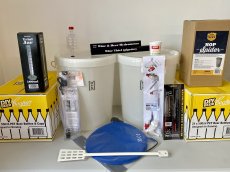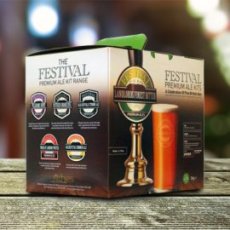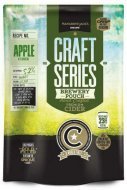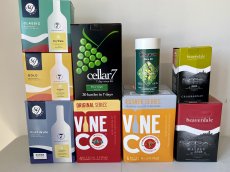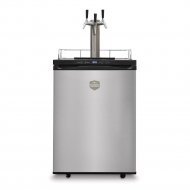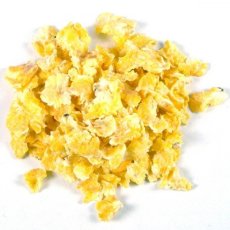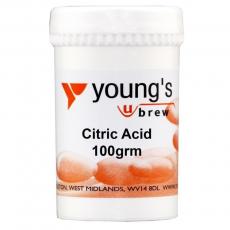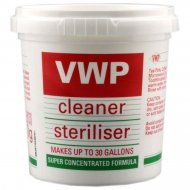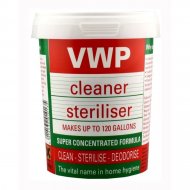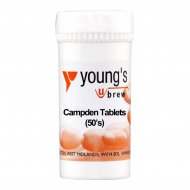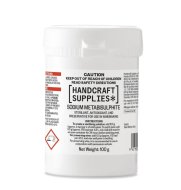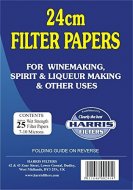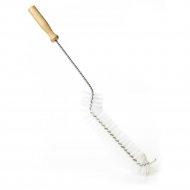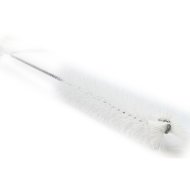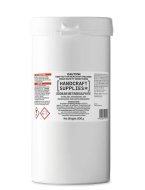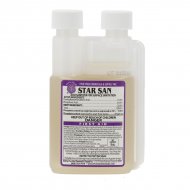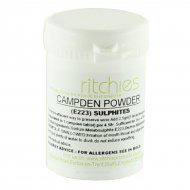Sign up to the Brew Mart newsletter for the latest news, offers & more
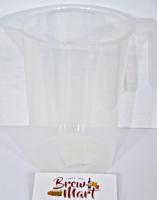
Sanitising/Sterilising
Cleaning & Sterilising Products which are used for the cleaning and sterilising of all utensils used during the brewing process when making homemade beer, wine, cider, mead, lager and spirits.
How does sanitising and sterilising differ?
Sanitising: Sanitising is another method of removing dirt and killing germs, often confused with sterilising.
Sterilisation gets rid of all germs, sanitising aims to lower the amount to a safe level.
How to Clean Brewing Equipment
Discover how to clean your homebrewing equipment effectively with Brew Marts expert advice.
Learn about the techniques and chemicals to use for a thorough clean.
It is good practice that two-thirds of the work done at any brewery should be cleaning the utensils.
Thankfully, when it comes to homebrew, things are somewhat less demanding.
However, the same principle remains – if you don't clean your equipment correctly, you're setting yourself up for disappointment and spoiled goods down the line.
Please read our expert homebrewing tips and the best equipment to start your brewing adventure.
The same underlying principle in alcoholic fermentation remains constant whatever you're brewing. You're making a sugary liquid for yeast to eat, and in doing so, the liquid transforms into alcohol and carbon dioxide. When the fermentation is complete, you then have an excellent final product.
However, that same sugary liquid will also look tempting to many microbes.
These microbes produce undesirable flavours and cause your brew to become 'ropey.' No brewer wants to see slimy strands of goo in their ginger beer, do they?
How do you sanitise your brewing equipment?
What do sterilisation and cleaning mean?
Sterilisation is an extreme physical or chemical process that eliminates all microbial life forms, including transmissible agents. Once an item has gone through the sterilisation process, all micro-organisms such as fungi, bacteria, viruses, and bacterial spore forms no longer exist.
There are three different terms in brewing to think about: clean, sanitised and sterilised.
Cleaning refers to any soil, dirt and visible stains. This kind of dirt is on the same level as washing crockery and cutlery after a meal.
Everything you are about to use during a brew should be spotlessly clean, meaning free of grease or dust.
Take care when cleaning plastic items that you avoid using hard scouring pads or anything that might scratch the surface, as those tiny scratches are a suitable place for microbes to collect.
Sanitising is the next level up and means reducing any potential sources of microbial spoilage to irrelevant levels.
You're getting rid of what you can not see to minimise the chances of anything spoiling your brew. Sanitising is an integral part of brewing which isn't very difficult at the homebrew level.
Remember to clean your equipment well after each use, and you can be confident that sanitising just before the subsequent use will be effective.
There is a third stage, sterilising, eliminating all life forms on your equipment.
Keep the basic principles, and the following cleaning products should see you through.
Things to Remember
- When using these chemicals listed below, closely follow any instructions on the packaging.
- When handling anything stronger than washing-up liquid, always wear rubber gloves and be careful of splashes.
- If diluting chemicals, it is advisable to add the chemical to water, not the other way around.
Remember to clean everything as soon as you are finished with it, using a cleaner/sanitiser for extra reassurance. Then sanitise your equipment right before usage.
Proprietary Mixes
Suitable for: cleaning and sanitising.
There are a few different brands of which VWP is the best known. They clean dirt off excellently, have a sanitising function, rinses off quickly, and leaves no odour.
They are reliable, reasonably priced, store well, and work on a whole range of equipment.
When getting your bottles ready for filling, follow the same principles.
Reuseable beer bottles need a thorough rinse-out of any sediment immediately after drinking. A bottle brush is beneficial for getting at anything lurking inside when cleaning them thoroughly.
Bottles, once cleaned, can be sanitised by running them through a hot dishwasher cycle without any detergent or rinse aid.
A simple cleaning routine is:
1) Always thoroughly wash your bottles after use without delay.
2) To thoroughly wash means several tapwater rinses, maybe two vigorous swirling shakes with cold water, then a final rinse with hot water.
3) Place bottles to drain freely such as on a on a "drainage tree."
4) Ensure the bottles are completely dry and then loosely refit the washed screw tops. Bottle tops are sometimes more easily managed by placing in dilute bleach solution & then drying.
5) Store the empty, clean bottles in a clean environment, which keeps them ready for immediate use.
6) If you use crown top bottles, it will be difficult to seal your bottles, so the above applies to screw tops only.
7) Plastic lightweight screw-top bottles are not elegant, but they are practical & don't break. After multiple uses, they will also show pitting corrosion at the beer/air interface. When pitting appears, it is a good idea to renew them
Check Out Sterilization and Disinfection
Published January 2022

